Edmund Berger explores the hidden history of Utopian Socialism and its close relationship with cultures of esoteric spirituality in the nineteenth-century United States.
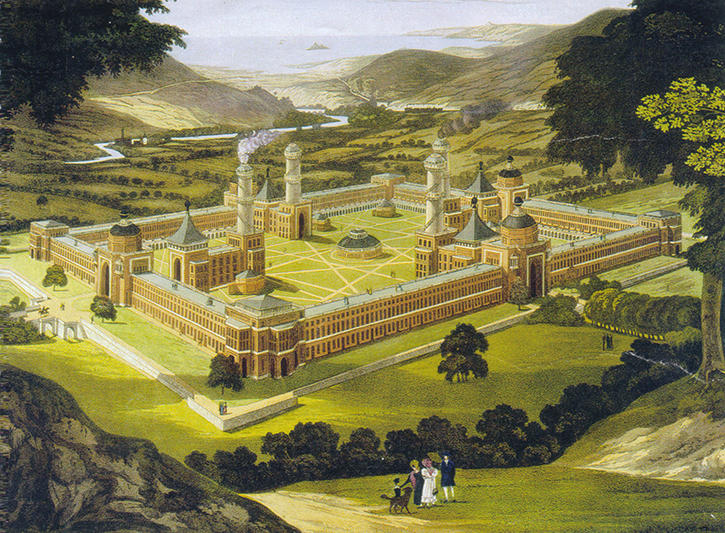
Take the highway east from Cincinnati, Ohio, and in no time the city with its lights and skyscrapers will fade in the rearview mirror, the dense concrete world giving way to the sporadic outcroppings of suburban life and then the wide openness of the American rural landscape. Lanes will be subtracted one by one until only two remain, one going in each direction, and to the north will be small rolling hills and to the south, snaking along the road, the waters of the Ohio River. Around forty miles or so and one will pass through a small town – an “unincorporated community”, as the US census puts it – with the curious name of ‘Utopia’. Blink and you’ll miss it: a few houses, a gas station, a historical marker. Get out and walk around and you might come across a hole in the group lined with ancient cut rocks; it’s the entrance to an underground church, one of the last traces indicating that Utopia was a major crossroads in what we might describe as America’s invisible landscape.
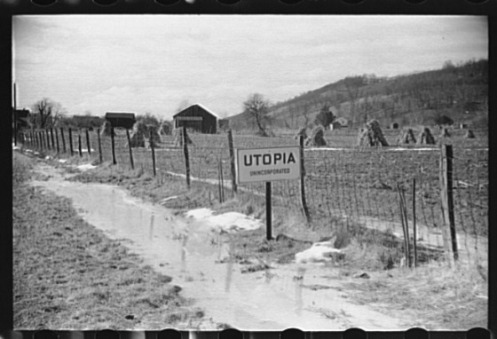
I have to confess to having pilfered this term from elsewhere. It’s actually the name of a book, published in 1975, by famed psychonauts Terence and Dennis McKenna. They use it to describe “an alien dimension all around us” that we can obtain glimpses of, if only obliquely, through tools such as mystical practices and the use of hallucinogenic drugs.1 This seems like a far cry from somewhere like Utopia, Ohio – but it seems appropriate to me on several levels. On one level, it’s because the history that produced Utopia is utterly alien to the experience of American life as we know it today, and actively challenges many of the core presuppositions that are currently baked into the construct of American identity. On another level, this alien world comes far closer to the turbulent slipspace that the McKenna brothers moved in: interweaving zones of fantastical possibilities encounters with spirits and an active eschatological element.
Something that becomes quickly recognizable about the invisible landscape is the elusiveness of a starting point. Unfolding across time and space in a way that denies a clear historical shape, it remains impervious to a fixed narrative. It is instead a bewildering strand of minor histories and counter-histories, unexpected slippages and surprising convergences – but if one is to pick a spot to act as an anchor, and for us here Utopia is just such a spot, then certain lines become clearer. From this forgotten location in Ohio, we unwind, as one is oft to do in tracking American history, back to the mythologized Old World – and in this case, France, and in particular, to the figure of Charles Fourier.
Fourier wore many paradoxical hats: he was a revolutionary who disdained the French revolution, a mystic committed to secularism, and a perverse sociologist who offered a utopian vision of socialism based on the idea of harmonic balance, liberated libidos, and the transvaluation of the toil of labor into play. According to Herbert Marcuse, Fourier’s labyrinthine output was a prefiguration of the unruly imagination of the surrealists – and it was this unruly imagination, he suggested, that in turn anticipated a communistic world to come.2 But whereas Marcuse was writing right at the transition from the 1950s to the 60s, seeing this Fourierist future coming into view in the collision of a then-embryonic counterculture and rampant industrial automation, Fourier himself organized his socialism from a complex cosmology. This entailed the existence of a dozen passions that ruled across several scales, ranging from the planets themselves down to individual humans. From the passions, a varied typology emerged based on the various attractions and repulsions of these passions.

A truly harmonious society, one in line with the agenda of a designer-God, could emerge in the proper balancing of the passions – and to this end, Fourier proposed what he called associations. Each association would have a limited number of people which he determined via his kabbalistic grid of typologies and were to be organized in large mansion-houses that he dubbed phalansteries (a combination of the French words for ‘phalanx’ and ‘monastery’). The phalanstery was to be self-operating, but only partially autonomous. At the summit of this grand social order existed a World Congress of Phalanxes, capable of coordinating between the various communities.
Fourierism arrived in America by way of a young writer and socialist by the name of Albert Brisbane. A New Yorker by birth, he had traveled to Europe to study philosophy, and through a circuitous route found himself under the direct tutelage of Fourier. At the end of the 1830s he was back in the States, where he promoted Fourierist thought via several organs: through the New York Tribune (whose founder, Horace Greenley, he had converted to Fourierism), with the creation of a Fourierist Society, authorship several books such as 1840s The Social Destiny of Man, and a periodical called The Phalanx. Fourierist thought was on the move, soon spreading outwards from New York and towards the west, where it set in motion a series of experiments in communal living organized around the principle of the phalansteries. Over thirty such experiments occurred during the movement’s peak in the 1840s, and a series of ‘Industrial Congresses’ were held to coordinate efforts between the nascent associations. This was not, however, the only outlet for the Fourierist wave. As Carl Guarneri charts in his masterful The Utopian Alternative: Fourierism in Nineteenth-Century America, there was a deeper-rooted integration of independent Fourierists, “[n]ondenominational utopian socialist churches”, “cooperative stores and urban communes” and the rising labor movement.3
Utopia’s origins lay precisely in the momentous push of the America Fourierist movement. In 1844, a group of citizens from Cincinnati arrived in this isolated spot of land to construct the Clermont Phalanx (named for the county that Utopia is located within). With the purchasing of 1140 acres of land, the great – and short-lived – experiment began:
Agriculture was to be the principle occupation of the association, although the various trades – blacksmithing, shoemaking, carpentry, brushmaking, and some of the lighter trades – were encouraged, and shops provided for those who were so engaged. Each member was assigned some congenial occupation by the council, and was expected to labor cheerfully to increase the common wealth.4
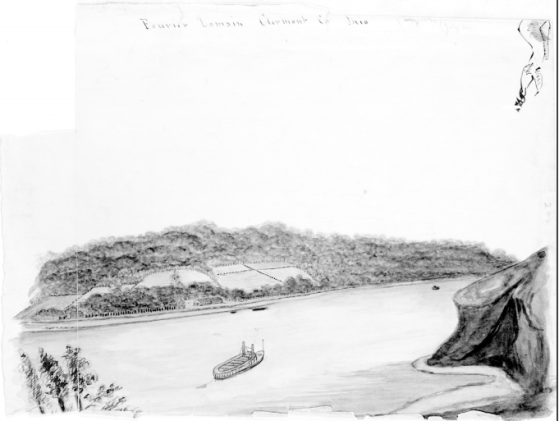
The mansion-house that Fourier envisioned was built, realized as a large two-story building sporting some thirty rooms. The efforts were, however, unrealized; like so many of the experiments in associationism that took place in that decade, the Clermont Phalanx would crumble within a few years. With mounting debt, a series of interpersonal disputes that erupted into lawsuits, and crops ruined by the Ohio River’s floods, the Phalanx closed up shop in 1846, and the land was split among three different parties. A small portion went to a local farmer, a portion that would eventually become Utopia proper went to another group of socialist, and a third, closer to the banks of the Ohio, to a group of spiritualists.
The people who founded Utopia have an interesting history in their own right. Among their ranks was an individual by the name of Josiah Warren, who earlier had been a member of a commune in Indiana called New Harmony. This was an experiment in collective living staged by the British socialist reformer Robert Owen, whose ideas were making a similar transit across the American landscape, though having predated the Fouriests by some years. Following his stint in New Harmony, Warren had gone to Cincinnati and opened the ‘Time Store’ – a general store that only dealt in a new form of money, a kind of labor note attached to the time that it took to produce the good in question. At some point, he returned to New Harmony to open a second Time Store, while also developing a philosophy of “equitable commerce” and “individual sovereignty”.5 Utopia, assembled not only from the ruins of the Clermont Phalanx but also from some of its members, was intended to be a prolonged experiment in these principles.
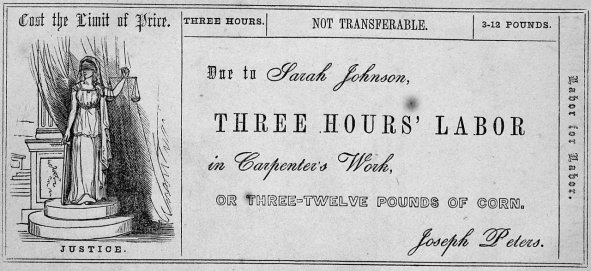
Not all of the individuals turned up in Utopia. Others shuffled to the south to join up with the spiritualist commune, which was led by a rather nomadic character by the name of John O. Wattles. Wattles was no stranger to communal efforts: he had previously been involved in establishing a collective in Logan County, Ohio, known as the Prairie Home Community. Like the Clermont Phalanx, it was an attempt at establishing a Fourierist association – but it was also a hotbed for a whole host of odd beliefs and esoteric sciences, with one visitor later recounting that he was “surprised to hear rude-looking men, almost ragged, plowing, fence-making, and in like employments, converse so freely upon Phrenology, Physiology, Magnetism, Hydropathy…”.6 Given the spiritualist-inclinations of the new group in Clermont County, we can assume that a similarly heady cocktail was swirling in the air.
The Clermont Phalanx had collapsed from internal problems, the spiritualist commune ending in tragedy. For reasons unknown, the group decided to move the Fourierist’s mansion, stone by stone, closer to the river’s edge. Their work was carried out throughout December in the year 1847, as an immense winter storm bore down upon them. The events that followed are recounted in detail in The History of Clermont County:
The rain and snow had been falling for several days, and on the 12th of December the banks of the river were full to overflowing, while the area of the building was steadily filling with water. Notwithstanding these dangerous appearances the moving continued (as the temporary buildings were uncomfortable), even after boats were necessary to reach the new house; but late in the afternoon of December 13th this work was suspended, and as far as is known 34 persons were at time sheltered under the roof of the new building. Among these were a number of new young people, not members of the community, who had been attracted by the moving, and it was proposed to while away the evening with a dance. While this was in progress, about eight o’clock, the walls of the building fell, crushing many to death, and others in the confusion were drowned. Seventeen lives were lost, many being strangers in the neighborhood, having but recently joined the community… This disaster, occurring at night in a terrible storm, struck terror to the hearts of the people, and the history of the community from its inception to its calamitous close is the most tragic event that has even occurred in the county.7
Regardless of the ultimate failure of the Fourierists, or the tragic events that befell the spiritualists, this entire episode illustrates the various threads that weave the fabric of the invisible landscape – namely, this intermingling of, on the one side, a radical sense of politics geared towards the transfiguration of lived experience, and on the other, things that we today would identify as being under the rubric of the ‘occult’. While it might seem like only a coincidence in location, this episode emerges from a wider web of connections and convergences. We’ve already seen that Wattle was involved in the Prairie Home Community, a Fourierist association that blended communal living with the esoteric. He was also involved, however, in a mysterious group in Cincinnati called the Spiritual Brotherhood, and it was from here that the plans to start the doomed community were born. As one writer from the period describes them:
There is a Society in this City [Cincinnati] which goes by the name of Spiritual Brotherhood. It is small, but made up of respectable and intelligent persons, so far as we know. They have held meetings about two years, and they are chiefly distinguished by teaching that man can hold communion with the spirits of another world, if he conform to all the physical and moral laws.8
This Spiritual Brotherhood remains little-known, and documentation surrounding their activities is scarce, but from what can be gleamed it becomes clear that they were quite active in not only local but national politics. One associate of the Brotherhood happened to be Warren Chase, a leading Fourierist, and president of a phalanx in Ceresco, Wisconsin. He certainly had an eye towards the spiritual and the occult. Even before arriving in Ceresco he undertook studies into the writings of Emanuel Swedenborg and examined Mesmerism, the therapeutic art of ‘animal magnetism’ that was believed to open conduits that allowed communication with the dead. These activities prompted him to organize a spiritualist study group at Ceresco that was in direct contact with the Brotherhood.9
This wasn’t the extent of Chase’s activities: he was a delegate to the conventions of the National Reform Association (NRA), an early advocate of land reform (based on the principle of “Equal Right to Land”), women’s suffrage and abolitionism, and later appears as having been involved the series of National Industrial Congresses that the NRA organized across the 1840s and 50s. In 1849, when the Congress began to organize its annual gathering, it was determined that Cincinnati would serve as an excellent location – and the Spiritual Brotherhood stepped up to act as the organizer.10
Grasping the odd nature of this series sort of convergences requires broadening our view of this invisible landscape a bit and look at spiritualism more directly. Popular histories tend to trace spiritualism to the revolutionary year of 1848, although the location was not a tumultuous European landscape haunted by the specter of communism, but the quiet town of Hydesville, New York. This is where two young sisters by the name of Maggie and Kate Fox allegedly made contact with a spirit that they nicknamed “Mr. Splitfoot”. They communicated with Mr. Splitfoot – later ‘identified’ as a murdered peddler named Charles B. Rosna – by interpreting ‘rappings’ or knocks on the wooden walls and floorboards as responses to questions posed by curious onlookers. The Fox sisters were soon veritable celebrities and could be found hosting public séances and the like to demonstrate their powers as mediums.

There’s a direct line between the Fox sisters and the uptake of spiritualism by communitarian socialists and radical reformers.11 Amy and Isaac Post were close friends of the Fox family, and as radical Quakers, were actively involved in early abolitionist and women’s suffrage movements. The Quakers already had a deep history of Christian mysticism. Stretching back to the late 1700s, there was a consistent involvement in various forms of folk magic and divination, much to the dismay of the society’s leadership. Through the Posts, belief in and practice of spiritualism spread rapidly through the Quakers, and beyond them, to the various radical reformist movements with which they were intertwined.
This is one path that spiritualism took, but there are others. In the volume of his History of Spiritualism, Arthur Conan Doyle suggests an earlier genesis of spiritualism, having tracked it back to the writings and experiences of Emanuel Swedenborg in the mid-1700s. A scientist, theologian and mystic, Swedenborg professed the ability to not only speak to the spirits of the departed but also to have actually traveled to their world beyond ours, which “consisted of a number of different spheres representing the various shades of luminosity and happiness, each of us going to that which our spiritual condition has fitted for us”.12 There’s a clear correspondence between these proto-spiritualist practices and ‘theory of correspondences’ that marked Swedenborg’s overarching theological cosmology, where there exist a series of planes, ranging from the spiritual to the material, through which God’s love flows. But what’s more is the existence of direct parallels between objects and forces in these planes: “…the sun in our natural world is a reflection of the sun in the spiritual world. By observing the way the heat and light of our sun interact with nature as we experience it through our senses, we can start to understand how love and wisdom work in the world of our inner spirit”.13
Swedenborgianism became an active force in America, with a church dedicated to his doctrines opening in Baltimore in 1793. The influence of this doctrine, however, spread further than just distinctly Swedenborgian churches, with ripples being felt in Quaker communities, in the writings of the Transcendentalists, and in the Mormon theology of Joseph Smith. The Rappites, an eschatologically-minded religious group that organized a communal society in Pennsylvania called Harmony, was influenced in no small part by Swedenborg, with founder Johann Georg Rapp having been influenced by the seer (as Swedenborg was often called) and other Christian mystics such as Jakob Bohme. The Rappites, in turn, helped form the very infrastructure of American communitarian socialism: it was the land and buildings of their second community in the state of Indiana, named New Harmony, that was sold to Robert Owen to carry out his own communistic experiment (as we’ve already seen, this is where the journey of Josiah Warren, the ostensible founder of Utopia, Ohio, began). To add extra dimensions to this already complicated web, when Owen arrived in Cincinnati in 1824, he found that a local community of Swedenborgians were “the only ones prepared to understand and put into practice his socialistic theories, many of which seemed closely akin to the ‘Heavenly Teachings’”.
Swedenborg’s theology, with its hermetic architecture and movement towards spiritualism, also mingled freely with the inner-workings of the American Fourierists. Ralph Waldo Emerson – who, while not a Fourierist, was familiar with them (and eventually came to regard them critically) – once wrote that “[o]ne could not but be struck with strange coincidence betwist Fourier and Swedenborg”; according to Carl Guarneri, this observation planted the seeds of the idea of compatibility between the two in the minds of Christian Fourierists.14 Several works on this topic soon followed, bearing meandering titles and even more meandering prose. One such work was Charles Hempel’s The True Organization of the New Church, as Indicated in the Writings of Emanuel Swedenborg and Demonstrated by Charles Fourier, published in 1848. For Hempel, Fourier and Swedenborg were but two sides of the same coin. “The doctrine of these two great men cannot remain separated”, he wrote. “Their union constitutes the union of Science and Religion”.15

One final strand leading into spiritualism that is worth baring mention of is that of Mesmerism, a therapeutic practice based on the principles of “animal magnetism” that, whilst having its origins in an attempt at Enlightenment science, quickly became integrated into occult and religious tendencies. Mesmerism takes us back to France, to 1778, when “Franz Anton Mesmer arrived in Paris and proclaimed his discovery of a superfine fluid that penetrated and surrounded all bodies”.16 Operating from the basis of Newtonian physics – but smuggling in through the backdoor the “doctrine of cosmic fluid” that can be tracked across the Hermetic continuum running Paracelsus down through Robert Fludd – Mesmer determined that this fluid was, in fact, the force that explained gravity.17 As gravity works across all spheres of existence, from the motion of the planets to those of individual bodies, he soon drew a connection between the movements of this supposed fluid and physical and psychic ailments.
“Mesmerism”, as it came to be called, involved the use of magnets to manipulate the superfine fluid within the body to cure it. Using a wand, a practitioner would ‘direct’ the fluid. Confirmation came, for Mesmer, not in the proof of the fluid’s existence, but in the trances, fits, and convulsions that his patients often underwent. Nonetheless, the scientific community of Paris regarded Mesmer’s work as fraudulent pseudoscience, and he remained consistently barred to the margins. It was here, however, that Mesmerism was taken up by a variety of cultural movements, many of them mystical in nature. According to Nicholas Goodrich-Clarke, a large Swedenborgian institution in Stockholm took a deep interest in Mesmerism and viewed the odd babblings that the patients often engaged in during their trance states as communication with the dead.18 Jean-Baptiste Willermoz, a figure immersed in the world of Masonry, Rosicrucianism, and alchemy, went further and experimented with Mesmerism in hopes that it would unveil the divine, pure condition that marked human life before the Fall. Others still utilized Mesmerism as a means to induce automatic writing, which was often regarded, particularly by figures like Willermoz, as the communication with the souls of the dead or with angels.
Curiously, Mesmerism seems to have borne some influence on Fourier. Both worked off the assumption that they were continuing Newton’s work, and each posed some sort of cosmological force: the ‘superfine fluid’ for Mesmer and the twelve passions for Fourier. Both alluded to notions of ‘universal harmony’ – and it was in the pages of a journal led by Pierre Ballanche, a mystic and counterrevolutionary figure who was actively engaged in Mesmerism, that Fourier first debuted his system.19
Mesmerism arrived in America during the early 1830s by way of one Charles Poyen, who right from the start was integrating the practices of animal magnetism with reformist movements like abolitionism.20 He was, in some sense, laying the direct groundwork for the spiritualism that would explode in the wake of the Fox sister’s supposed communication with the dead; as Emma Britten, writing in 1870, described,
In all principle cities of the Union, gentlemen distinguished for their literary abilities, progressive opinions, or prominence in public affairs, have graduated from the study of the study of magnetism and clairvoyance to become adherents to the cause of Spiritualism, whilst many of the best mediums – especially the trance speakers and magnetic operators – have taken their first degree in Spiritualism, president in 1825 as experimentalists in the phenomena of mesmerism.21
A particularly poignant convergence of various threads takes place in the experience of Anna Parsons, a practitioner of what was known as ‘psychometrics’ or ‘soul measuring’. It was a direct outgrowth from spiritualism: the psychometrist worked on the magnetic and electrical impulses that were seen as flowing through the individual, but whereas mesmerism was initially intended (but by no means limited to) therapeutic practices, psychometry’s goal was “the development and exercise of the divine faculties in man”.22 Parsons, as it happened, practiced psychometry from her station in Brook Farm – a communal experiment that was located just outside of Boston, Massachusetts that had come to be organized as a Fourierist association.23 There, her psychometric practices slid directly into spiritualism. In one notable experience, she encountered the spirit of Fourier himself and reportedly carried out a conversation with him.24
Other leading Fourierists who were engaged with mesmerism, psychometry, and spiritualism were Thomas and Mary Gove Nichols. Thomas Nichols himself had been the student of Charles Poyen and had demonstrated aptitude in the mesmeric art by healing his mentor, while his wife, Mary, was an active medium and involved in hydropathy, or as it is more commonly known today, ‘water-cures’ (it is worth pointing out that the two were married in a Swedenborgian ceremony).25 The two had lived for a time in an experimental community in New York called Modern Times, which had been founded by Josiah and his friend Stephen Pearl Andrews26, before relocating to Cincinnati, where they became immersed in the circles linking together spiritualism and radical reformism – namely, women’s suffrage. Between 1856 and 1857 they moved north to a small town in Ohio called Yellow Springs and set up a community of their own dedicated to hydropathy called the Memnonia Institute. Memnonia was cast in a millenarian shade; the Nichols held that the project of their Institute would aid in the realization of a “Harmonic Society on Earth”.27 This is a clue to profoundly Fouriest orientation of the Memnonia Institute, and indeed, the two chose April 7th, 1857 – Fourier’s birthday – as the date for the project’s formal opening.
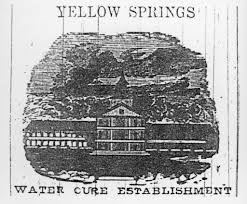
What cuts across this different threads – communal experimentation, (mystical) Christianity, radical reformist politics, and spiritualism – is, at the base, the belief that a new epoch was dawning, and that these elements and their interweaving made up the fabric of this emergent world. Joseph Rodes Buchanan, an ardent promoter of spiritualism and psychometry, described mesmeric practices as a component in the emergence of a ‘new civilization’. Many of the Christian sects that took up spiritualist beliefs in this period descended from the Radical Reformation in Europe, which saw the parallel emergence of a host of eschatological expectations. Flowing across to the Atlantic to the Americas, this seeded the activities of groups like the Rappites, and before them the Society of the Woman in the Wilderness (a quasi-monastic communitarian experiment that portended the Second Coming in the year 1694) and the Ephrata Cloister (somewhat of a split from the Society of the Woman in the Wilderness that integrated itself with the Seventh-Day Adventists, producing a mystical heralding of an imminent ‘Eternal Sabbath’ that would see the “whole Restauration of all things”).28 Even the secular Robert Owen readily adopted a millenarian tone. In an 1825 speech to American politicians – including President John Quincy Adams – he described how the emerging communal experiments were “commenc[ing] a new empire of peace and goodwill to men… the state of virtue, intelligence, enjoyment, and happiness which has been foretold by the sages of the past would at some point become the lot of the human race”.29
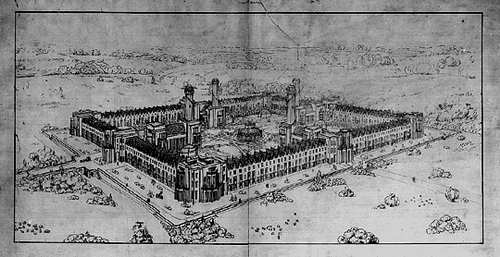
As we saw above, Fourierists like the Nichols also slotted into this continuum via their rhetoric of a new ‘harmonic age’, but this tendency was overt even decades before the founding of the Memnomia Institute. Consider the following from the minutes of the 1844 General of the Friends of Association in the United, recorded and published in an issue of The Phalanx:
It would be doing injustice to this occasion, not to open our discussion of the Principles of Social Reorganization, by an expression of feelings with which we have come up, from far and near, to this assembly. It is but giving voice to to what is working in the hearts of those now present, and thousands whose sympathies are at this moment with us over our whole land, to say, this is a Religious Meeting. Our end is to God’s will, not our own; to obey the command of Providence, not to follow the leadings of human fancies. We stand today as we believe amid the dawn of a New Era of Humanity…30
In many respects, the slow creep of millenarianist thought reverberates across the whole of the American experiment. The New World has always been understood not only in terms of space, but in terms of time, and especially in a New Time that breaks with everything that came before. Around the time of his third voyage, Christopher Columbus penned his Book of Prophecies, which foretold a series of events that set in motion the Second Coming. He readily adopted the classic idea of the ‘world-emperor’ or the ‘last king’ whose reign would immediately presage Christ’s return, and in his monarchist backers he thought he had identified exactly who would play this role. Moving in similar waters was John Dee and his eschatological vision of a world empire that came before the Biblical apocalypse. The New World was central to this vision: believing that the mythological King Arthur and the Welsh prince Madoc had visited the Americas, Dee held that Britain maintained a spiritual right to the land. As Jason Louv points out, the similarities between Columbus and Dee are not mere coincidences – Dee’s schemes for the future were but a Protestantization of the Catholic traditions that Columbus was drawing upon.31 But while many of the utopian socialist and associationist currents sketched above drew from similar sources, they lacked the distinct monarchist and even aristocratic character that a Columbus or a Dee posited. Their millenarianism was often what we might today describe as exhibiting a populist orientation.
Millenarianism is a concept that is regarded with considerable disrepute. Besides the common images that it brings to mind – doomsday cultists, survivalist fringe, the specter of violence and dire prophecies of imminent catastrophe – there are the arguments put forward by people like Norman Cohn. In The Pursuit of the Millennium, Cohn argues that millenarian groups, particularly those that made up the actively revolutionary side of the Radical Reformation, are the direct antecedents to the slew of totalitarians that shaped the course of the twentieth century. From Thomas Muntzer, whose oft-cited declaration of omnia sunt communia! has been identified by some as the prefiguration of communism, we arrive at the Stalins and the Hitlers.32
It was the Situationists, who can be regarded as something like second or third cousins of our American utopians – they were resolutely Marxist, but remained perpetually haunted by the ghost of Fourier – who took measures to flip Cohn’s script. In Guy Debord’s Society of the Spectacle and Raoul Vaneigem’s The Movement of the Free Spirit (a work that, it must be said, was penned after his expulsion from the Situationist International, yet remains continuous with his earlier concerns), the revolutionary dimensions of millenarian thought is re-affirmed. For Debord, the inversion of Cohn took place through the classic Marxist analysis of Christianity that originated with Engels and Kautsky which held that the revolutionary strains of religion were expressions of class struggle in a period in which ‘class consciousness’ as such could not be articulated.33 Vaneigem, on the other hand, slips more towards the surrealist debt that Debord hoped to hold at bay. “The most radical element of the movement of the Free Spirit”, he wrote, “had to do with an alchemy of individual fulfillment, in which the creation of a superior state (the all-important ‘perfection’) was achieved by a gradual relinquishment of the economy’s hold over individuals”.34
There is a remarkable correspondence between the Situationists and the line coursing through Marcuse’s work that we cited out the outset, and it makes sense: the constellation of Fourier, surrealism, and Marx is common to each. “Imagination is about to reclaim its rights”, wrote Marcuse, filtering the great discovery of the surrealists through Freud.35 This is the same as what Vaneigem called the poetry of revolution, an alchemical art that transforms the “basest metals of daily life into gold”.36 It too, therefore, shares the suppressed millenarian position, being a politics that aims above all else at a profound and sweeping transfiguration. But while there is a future orientation, it also appears, ever so uncannily, as a strange echo of a succession of moments in the past, not in Europe, but in nineteenth-century America, where imagination did indeed strain to reclaim its rights in the form of strange sciences, mystical religion, and a struggle to live a utopian life. Sometimes it ended in tragedy, like the spirituals who fell to the Ohio River’s currents, and most of the time is simply crumbled away. Yet the imprint still remains.
All that is left of these moments now are just echoes, the ghostly sound of this other, alien landscape whispering across time and space. Echoes reverberating out from scattered traces tucked away in the cracks and crevices of an America now consolidated and fixed in its aimless spiral – and yet, at the same time, they are cracks and crevices, obscured by-ways and old roads, that sit plainly in sight if one only knows where to look.
- McKenna, Terence and McKenna, Dennis. The Invisible Landscape: Mind, Hallucinogens, and the I Ching. New York: HarperCollins Publishers, 1975, p. 80
- See Marcuse, Herbert. Eros and Civilization: A Philosophical Inquiry into Freud. Boston: Beacon Press, 1966. For an American take on surrealism, the work of the Chicago Surrealists is paramount. See: Rosemont, Franklin, and Radcliffe, Charles. Dancin’ in the Streets: Anarchists, IWWs, Surrealists, Situationists and Provos in the 1960s as Recorded in the Pages of the Rebel Worker and Heatwave. Chicago: Charles H. Kerr Publishing Company, 2005. It is worth mentioning that Franklin Rosemont, the leading luminary of the Chicago Surrealists, corresponded with Marcuse.
- Guarneri, Carl J. The Utopian Alternative: Fourierism in Nineteenth-Century America. Ithaca/London: Cornell University Press, 1991, p. 3
- Everts, Louis H. The History of Clermont County, Ohio, with Illustrations and Biographical Sketches of its Prominent Men and Pioneers. Philadelphia: J.B. Lippincott & Co., 1880, p. 343
- For a succinct summary of what ‘equitable commerce’ and ‘individual sovereignty’ entail, see Warren, Josiah. Manifesto. 1841. https://www.libertarian-labyrinth.org/anarchist-beginnings/josiah-warren-manifesto-1841/
- Noyes, John Humphrey. History of American Socialisms. Philadelphia: J.B. Lippincott & Co., 1870, p. 320
- Everts. The History of Clermont County, p. 343-344
- Barrett, Benjamin Fisk. Davis’ Revelations Sifted: A Review of Rev. T.L. Harris’ Lectures on “Spiritual Philosophy”. Cincinnati: Cincinnati Daily Times, 1848, p. 2
- Socialism and American Life, p. 18
- See Lause, Mark A.. Free Spirits: Spiritualism, Republicanism, and Radicalism in the Civil War Era. Chicago: University of Illinois Press, 2016, p. 26. Lause also covers the National Reform Association and the Industrial Congresses in his excellent Long Road to Harper’s Ferry: The Rise of the First American Left. London: Pluto Press, 2018
- There’s a number of works documenting the intertwining history of early American radicalism and spiritualism. See Lause’s Free Spirits in footnote 10. See also Braude, Anne. Radical Spirits: Spiritualism and Women’s Rights in Nineteenth-Century America. Bloomington/Indianapolis: Indiana University Press, 1989
- Conan Doyle, Arthur. The History of Spiritualism, Volume 1. London: Gassell and Company Ltd., 1926, p. 9
- Swedeborg Foundation. “Correspondences”. https://swedenborg.com/emanuel-swedenborg/explore/correspondences/
- Quoted in Francis, Richard. Transcendental Utopias: Individual and Community in Brook Farm, Fruitlands and Walden. Ithica/London: Cornell University Press, 1997, p. x.
- Hempel, Charles Julius. The True Organization of the New Church as Indicated in the Writings of Emanuel Swedenborg and Demonstrated by Charles Fourier. New York: 1848, p. 12
- Darton, Robert. Mesmerism and the End of Enlightenment in France. Cambridge: Harvard University Press, 1968, p. 3
- Goodrick-Clarke, Nicholas. The Western Esoteric Traditions: A Historical Introduction. New York: Oxford University Press, 2008, p. 177
- Ibid, p. 178
- Darton. Mesmerism and the End of Enlightenment in France, p. 142-143
- See Carlson, Eric T. “Charles Poyen Brings Mesmerism to America”. Journal of the History of Medicine and Allied Sciences. Vol. 15, No. 2 (1960), p. 121-132
- Hardinge, Emma. Modern American Spiritualism: A Twenty Years’ Record of the Communion Between Earth and the World of Spirits. New York: 1870, p. 23. While this book was self-published, Emma Hardinge made use of the facilities owned by the Banner of Light, a pioneering journal dedicated to spiritualism. Banner of Light would also go on to be a vigorous promoter of a host of reformist causes, including abolitionism and women’s suffrage. When the events around the Paris Commune unfolded in 1871, the Banner published articles in support of the Communard’s cause – and telling, described their concept of proletarian self-governance as having been “derived from a knowledge of the writings of Fourier and others of that school”. See Messer-Kruse, Timothy. The Yankee International: Marxism and the American Reform Tradition, 1848-1876. Chapel Hill/London: University of North Carolina Press, 1998, p. 103
- Buchanan, Joseph Rhodes. Manual of Psychometry: The Dawn of a New Civilization. Boston: 1885, p. 9-10. Joseph Rhodes was one of the major promoters of psychometry and was associated with an institution in Covington, Kentucky called the Eclectic Medical College. Covington is located close to Cincinnati, Ohio, and the institution maintained ties with the city’s overlapping circles of radical reformers, spiritualists, and healers of all stripes. According to Mark Lause, Buchanan was a member of the Spiritual Brotherhood. See Lause. Free Spirits, p. 9-10.
Importantly, Buchana’s work on psychometry greatly influenced a prominent individualist anarchist by the name of Stephen Pearl Andrews; Andrews, in turn, was close to Josiah Warren, our founder of Utopia, Ohio. Together the two organized a community in New York state called Modern Times. Andrews, incidentally, was an outspoken proponent of abolitionism and is also notable as the person to first introduce Marx and Engel’s Communist Manifesto to an American audience. Buchanan’s influence on Andrews can be seen most clearly in Andrews, Stephen Pearl. The Basic Outline of Universology. An Introduction to the Newly Discovered Science of the Universe: Its Elementary Principles; and the First Stages of Their Development in the Special Sciences. New York: Dion Thomas, 1872. Unsurprisingly, Fourier stands as another strand of influence flowing into this work.
- Albert Brisbane, who we met at the outset as the primary popularizer of Fourierism in America, was closely connected to these happenings, and even spent time at Brook Farm.
- his incident is recounted in further detail in Ogden, Emily. Credulity: A Cultural History of US Mesmerism. Chicago: University of Chicago Press, 2018, p. 218-219
- For a biography of Mary Grove Nichols, see Silver-Isenstadt, Jean. Shameless: The Visionary Life of Mary Grove Nichols. Baltimore: John Hopkins University Press, p. 2002. The hydropathy movement – and the Nichols role in it – is covered at length in Cayleff, Susan E. Wash and Be Healed: The Water-Cure Movement and Women’s Health.
- See footnote 21
- Stearns, Bertha-Monica. “Memnomia: The Launching of a Utopia”. The New England Quarterly, Vol. 15, No. 2 (June, 1942), p. 280
- Albanese, Catherine L. A Republic of Mind and Spirit: A Cultural History of American Metaphysical History. New Haven: Yale University Press, 2007, p. 80
- Lockwood, George Browning. The New Harmony Communities. 1902, p. 88
- Burt Franklin (ed.). The Phalanx, or Journal of Social Science, Issues 1 – 23. New York: Burt Franklin Resources and Work Series, date unknown, p. 104. The individual speaking here was William Henry Channing, a prominent Unitarian minister and vigorous promoter of associationism. He had led a sizable in congregation in Cincinnati before relocating to Boston. There, he led the Religious Union of Associationists, which was closely linked to the experiment taking place at Brook Farm.
- See Louv, Jason. John Dee and the Empire of Angels: Enochian Magick and the Occult Roots of the Modern World. Rochester: Inner Traditions, 2018
- See Cohn, Norman. The Pursuit of the Millennium: Revolutionary Millenarians and Mystical Anarchists of the Middle Ages. New York: Oxford University Press, 1970. For a fictional account that takes omnia sunt communia as a prefiguration of communism, see Blissett, Luther. Q. New York: Mariner Books, 2005
- Roland Boer has produced an impressive series of books that deal with this topic; most germane here would be Boer, Roland. Criticism of the Earth: On Marx, Engels, and Theology. Chicago: Haymarket Books, 2013
- Vaneigem, Raoul. The Movement of the Free Spirit. New York: Zone Books, 1994, p. 249
- Marcuse. Eros and Civilization. p. 149
- Vaneigem, Raoul. The Revolution of Everyday Life. Oakland: PM Press, 2012, p. 169
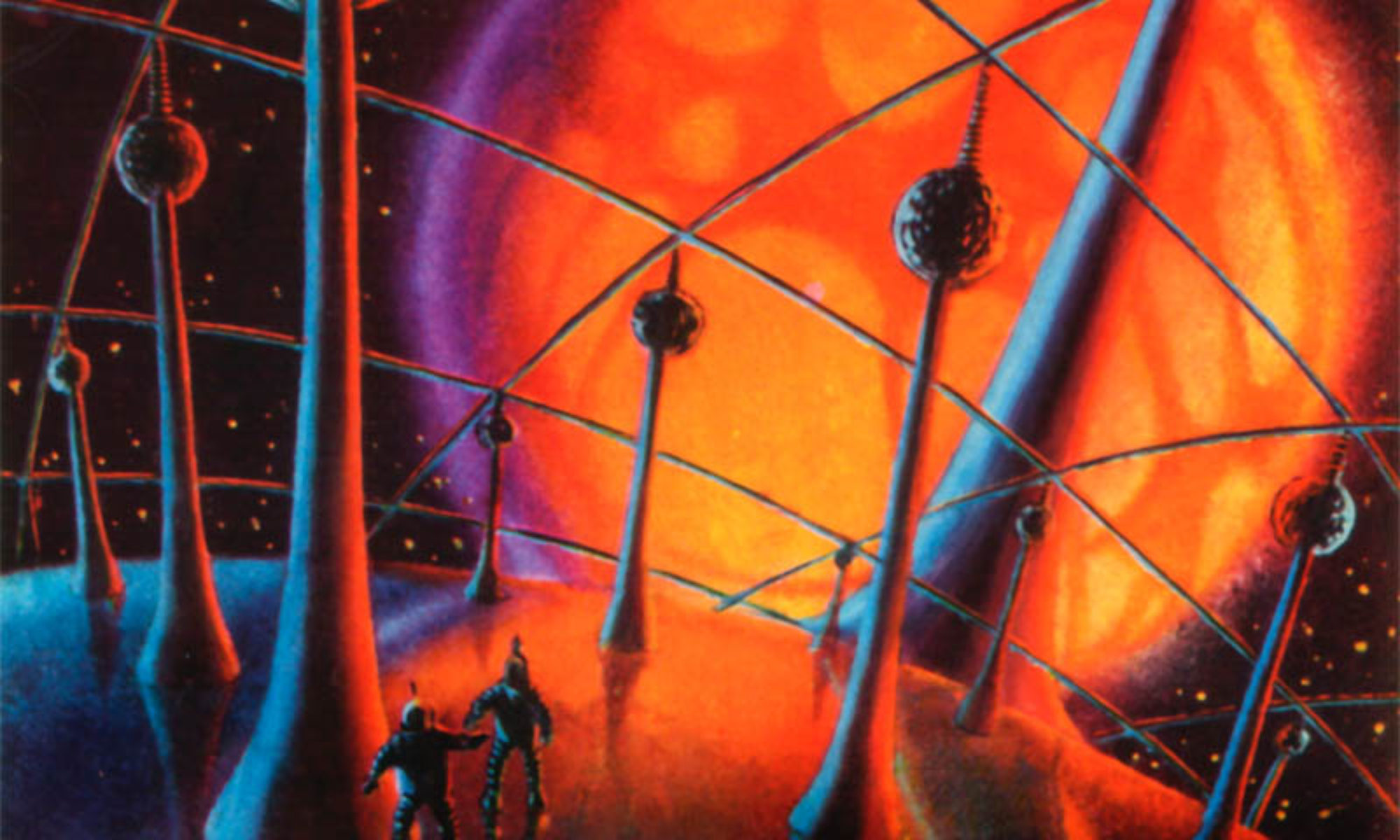
111 Replies to “The Invisible Landscape: Tracing the Spiritualist Utopianism of Nineteenth-Century America”
Comments are closed.